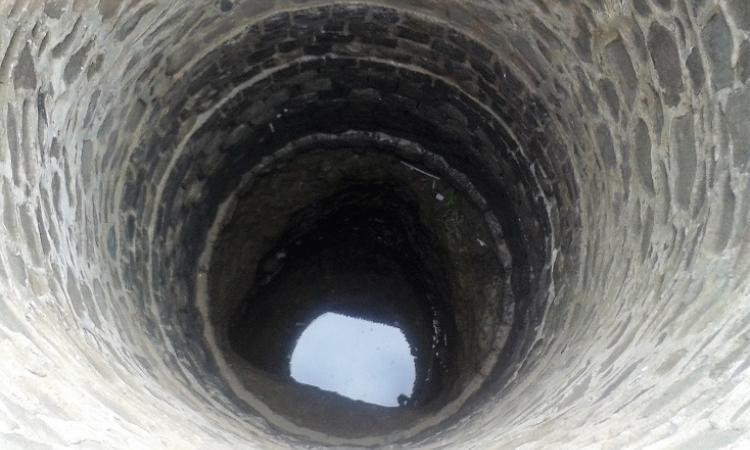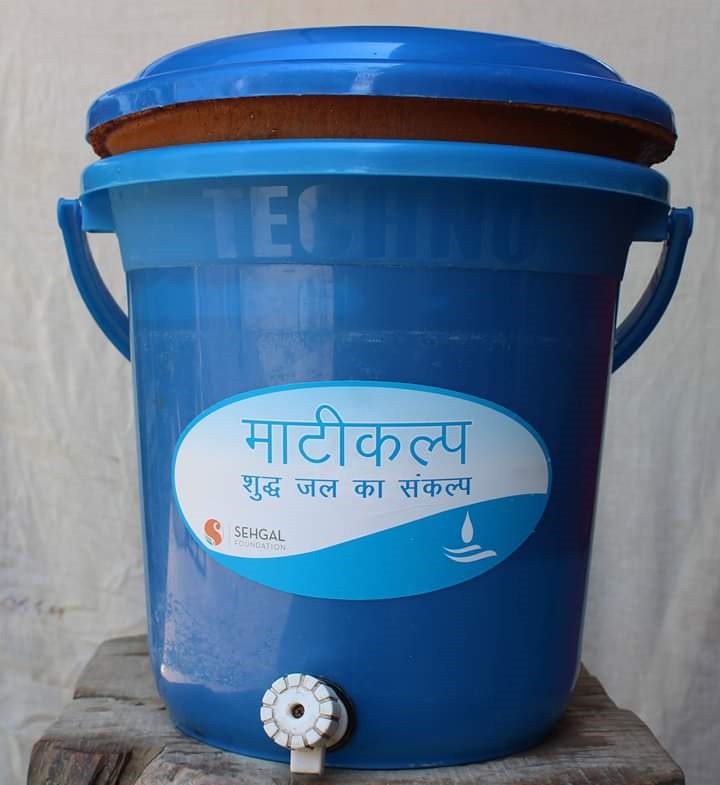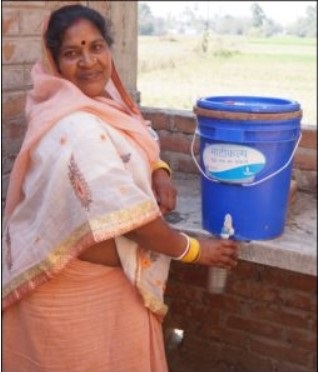
Safe drinking water, a global concern
The safety and accessibility of drinking water is a global concern. The World Health Organisation (WHO) reports that 80 percent of diseases are waterborne. Contamination from the geological formations (termed geogenic contamination) is the major source of groundwater contamination.
Geogenic contaminants originate through weathering of rocks/formations deposited in the aquifer that are soluble in water. Arsenic and fluoride are such geogenic contaminants that possess a greater risk to human health (Ghosh, 2017). A major part of India suffers from fluoride and arsenic contamination in groundwater.
Arsenic contamination, a growing problem in India
Groundwater plays a vital role in rural and urban domestic needs, industrial needs, and irrigation purposes in India. (Bhattacharya et al., 2019). Arsenic (As) is a potent environmental pollutant and a silent toxin. Its concentration depends on local hydrology, geology, and geochemical characteristics of the aquifer.
India is one of the largest countries struggling with geogenic contamination of arsenic. West Bengal, Jharkhand, Bihar, Uttar Pradesh, Assam, Manipur, Chhattisgarh, Haryana, Punjab, and Karnataka are the reported arsenic-affected states in India (Bhattacharya et al., 2019). Jal Jeevan Mission (JJM), March 2022 reports that there are 1,657 arsenic-affected habitations in 6 states (Assam, Bihar, Jharkhand, West Bengal, Uttar Pradesh, and Punjab).
The Bureau of Indian Standards (BIS), has set the desirable limit of arsenic in drinking water to 10 ppb. The consumption of arsenic above the desired limit affects respiratory and gastrointestinal systems along with an increase in the risk of cancer and skin diseases (Kushawaha and Aithani, 2021).
Arsenic contamination can be removed from water through some conventional technologies such as adsorption, oxidation, membrane filtration, and ion exchange (Kushawaha et al., 2021).
WHO identifies household water treatment, and safe storage (HWTS) as a potential solution to deal with arsenic contamination (WHO, 2019). The most promising technologies for household water treatment are filtration (Biosand filter, ceramic pot filter, membrane filter, and candle filter) accompanied by disinfection (boiling, chlorine, UV, SODIS, and more) (Agrawal et al., 2006). Household water treatment technologies have an edge over community-level technologies as they reduce the chances of secondary infection (Sharma, 2018).
In groundwater, arsenic exists in two valence states - As (III) and As (V). As (III) is more toxic, mobile, and much more difficult to remove than As (V). However, As (III) can be easily oxidised into As(V), which is then easy to remove by the adsorption process. Biosand Filter is one such technology that works under the force of gravity without using any form of energy.
Jalkalp - for arsenic removal
Sehgal Foundation innovated the sustainable Biosand Filter technology and named the innovated model “JalKalp”. This household water filter ‘JalKalp’ is capable of addressing microbial, iron, and manganese contamination. Its design is also optimised for natural oxidation to oxidise As (III) into As(V). Integration of Zero Valent Iron (ZVI) technology makes it perfect for removal of arsenic via adsorption of As(V) on Hydrous Ferric Oxide (HFO) produced by ZVI placed in a diffuser.
Indian Institute of Technology, Kanpur, conducted a study on Biosand filters to evaluate the performance and feasibility of a JalKalp Biosand filter in providing potable water to rural households affected by chronic arsenic contamination in India. The study proves that JalKalp removes arsenic by adsorption on rusted iron nails with an efficiency of 95-99 percent and microbial contamination through the addition of germicidal properties of copper.
The study first took place under laboratory conditions and later community trials were undertaken in select villages of Bihar, India. The toxicity characteristic leaching procedure (TCLP) study indicated that the sludge generated was not hazardous and could be disposed off safely (Verma et al., 2021). JalKalp Biosand filter was efficient in lowering the concentration of arsenic from 1750 ppb to less than 10 ppb (safe for consumption) in the Buxar district of Bihar, India.
Matikalp - low cost ceramic pot filter technology
Considering the low affordability of the poorest of poor households, Sehgal Foundation is also promoting a ceramic pot filter technology (capable to remove microbial, iron contamination, and turbidity to improve water quality at the household level) and named it “MatiKalp”. So far the experiments have shown that this integration has brought down arsenic concentration from 600 ppb to less than 10 ppb. Experiments are on going to adapt MatiKalp for higher concentrations.
The use of ZVI integrated into JalKalp and MatiKalp has worked wonders for the people affected by arsenic. With arsenic, JalKalp and MatiKalp were also able to reduce iron contamination from 5 ppm to less than 0.3 ppm.

The community has showed a positive response to the study conducted in their area in terms of health improvement and economic outcomes. Earlier, the community believed that the filtered water was as pure as a holy river and on the contrary, some also believed that drinking contaminated water would not cause any serious harm to their health. In this regard, Sehgal Foundation sensitised and built the awareness among the youth and encouraged them to pass on this information to the entire household.
For arsenic-affected Indian states, the use of low-cost Biosand filters and ceramic pot filters such as JalKalp and MatiKalp with the integration of ZVI can be considered a sustainable solution to providing safe drinking water in every household.
Put together, this low-cost innovation aims at resolving one of the important developmental issues that not only affects the health of populations, but also has an impact on livelihoods and the economy. Given its ease of use and the benefits it brings to its users, this innovation is scalable to regions affected by water contaminated with arsenic and iron, microbial contamination, and turbidity simultaneously.

Sustenance of the impact however depends on its implementation wherein the end-user realises its full potential and eventually becomes a champion to amplify the technology in his/her area. It is innovation both at the design and implementation level that has made JalKalp and MatiKalp very effective in helping countries like India accelerate their position in achieving SDG number six.
References
Ghosh, N.C. (2017) Ground Water Hydrology Division, National Institute of Hydrology, Roorkee 247 667, India
Bhattacharya, A.K., Lodh, R., Roy, A.K., Karthik, D.M.P., Singh, A., Mishra, A.K (2019) An Analysis of Arsenic Contamination in the Groundwater of India, Bangladesh and Nepal with a Special Focus on the Stabilization of Arsenic-Laden Sludge from Arsenic Filters, Electronic Journal of Geotechnical Engineering, 2019 (24.01), pp. 1-34.
Kushawaha, J. and Aithani, D (2021) Geogenic Pollutants in Groundwater and Their Removal Techniques
Agrawal, V.K., Bhalwar, R (2006) Household Water Purification: Low-Cost Interventions, Medical Journal, Armed Forces India, 2009 Jul; 65 930, 260-263.
Sharma, L. M (2018) Promoting Community Health and Preventing Waterborne Diseases with The Jalkalp Water Filter. IOSR Journal of Environmental Science, Toxicology and Food Technology (IOSR-JESTFT), 12(2), 16-22.
Verma, A., Sharma,L.M., Pahuja, G., Nilling, J.J, Kumar, A., Singh, A (2021) Modified Biosand Filter for Provisioning of Potable Water to Rural Households Affected by Chronic Arsenic Pollution in Groundwater, Environmental Engineering Science, 38 (11).
WHO (2019) Results of Round II of the WHO International Scheme to Evaluate Household Water Treatment Technologies. Accessed on 12th August 2022.
Press Information Bureau (2022) Arsenic contamination in drinking water. Government of India, Ministry of Jalshakti. Accessed on 12th August 2022.